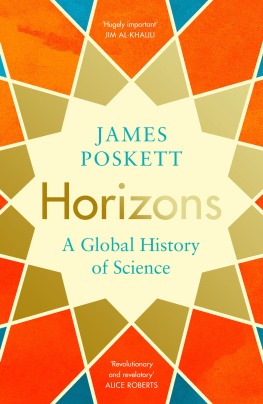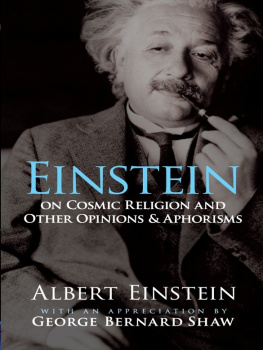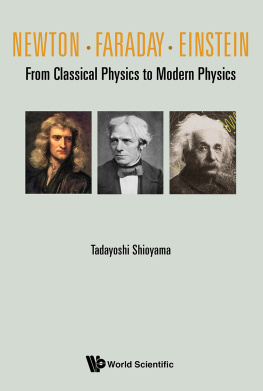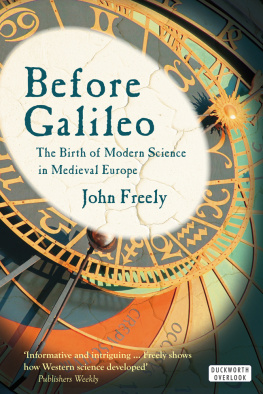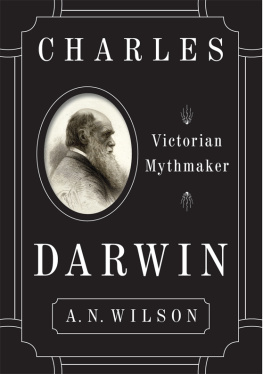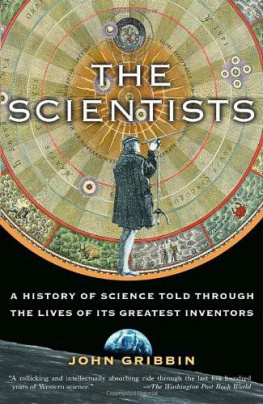Horizons
This treasure trove of a book puts the case persuasively and compellingly that modern science did not develop solely in Europe. The well-trodden narrative that the scientific revolution began with Copernicus and Galileo, and continued through Newton, Darwin and Einstein, neglects so much. We acknowledge that science today is a truly global enterprise, but this hugely important book explains that it has ever been thus Jim Al-Khalili, author of Paradox
From palatial Aztec botanic gardens to Qing dynasty evolutionary theories, Horizons upends traditional accounts of the history of science, showing how curiosity and intellectual exploration was, and is, a global phenomenon Rebecca Wragg Sykes, author of Kindred
Horizons is a remarkable book that challenges almost everything we know about science in the West. Poskett brings to light an extraordinary array of material to change our thinking on virtually every great scientific breakthrough in the last 500 years. From Copernicus to Newton and Einstein, he uncovers the importance of Arabic, Chinese, Japanese, sub-Saharan and South American scientists and their discoveries in everything we know, from gravity and relativity to splitting the atom. Horizons is an explosive book that truly broadens our global scientific horizons, past and present Jerry Brotton, author of A History of the World in Twelve Maps
A useful corrective that brings us closer to a more accurate history of Western science one which recognizes Europe, not as exceptional, but as learning from the world Angela Saini, author of Superior
The righting of the historical record makes Horizons a deeply satisfying read. We learn about a fascinating group of people engaged in scientific inquiry all over the world. Even more satisfyingly, Horizons demonstrates that the most famous scientists Copernicus, Darwin and Einstein among them couldnt have made their discoveries without the help of their global contacts Valerie Hansen, author of The Year 1000
A provocative examination of major contributions to science made outside Europe and the USA, from ancient to modern times, explained in relation to global historical events. I particularly enjoyed the stories of individuals whose work tends to be omitted from standard histories of science Ian Stewart, author of Significant Figures
In this tour de force Poskett beautifully discredits the idea of isolated, European geniuses, showing us that science, as we know it today, emerged through vibrant, globetrotting international exchanges Patrick Roberts, author of Jungle
This is the kind of history we need: it opens our eyes to the ways in which what we know today has been uncovered thanks to a worldwide team effort Michael Scott, author of Ancient Worlds
James Poskett
HORIZONS
A Global History of Science

PENGUIN BOOKS
UK | USA | Canada | Ireland | Australia
New Zealand | India | South Africa
Penguin Books is part of the Penguin Random House group of companies whose addresses can be found at global.penguinrandomhouse.com.

First published by Viking in 2022
Copyright James Poskett, 2022
The moral right of the author has been asserted
ISBN: 978-0-241-39411-3
This ebook is copyright material and must not be copied, reproduced, transferred, distributed, leased, licensed or publicly performed or used in any way except as specifically permitted in writing by the publishers, as allowed under the terms and conditions under which it was purchased or as strictly permitted by applicable copyright law. Any unauthorized distribution or use of this text may be a direct infringement of the authors and publishers rights and those responsible may be liable in law accordingly.
For Alice and Nancy
Illustrations
Illustration of hummingbirds from the Florentine Codex, 1578 (Private collection)
Engraving of an armadillo from Francisco Hernndez, The Treasury of Medical Matters of New Spain, 1628 (Private collection)
Illustration from Martn de la Cruz, The Little Book of the Medicinal Herbs of the Indians, 1552 (Wellcome Images)
Oldest surviving European map to include the Americas, 1500 (Wikipedia)
Aztec map of Misquiahuala, New Spain, c.1579 (University of Texas)
The Fakhri Sextant (Wikipedia)
Arabic manuscript translation of Claudius Ptolemys Almagest, copied in Spain in 1381 (Kislak Center for Special Collections, University of Pennsylvania)
Diagram illustrating the Tusi couple from Nasir al-Din al-Tusi, Memoir on Astronomy, 1261 (MPIWG Library/Staatsbibliothek Berlin)
Diagram illustrating the Tusi couple from Nicolaus Copernicus, On the Revolutions of the Heavenly Spheres, 1543 (Library of Congress)
Taqi al-Din working in the Istanbul observatory (Alamy)
Two magic squares from an early modern Arabic mathematical manuscript (Alamy)
The Astronomical Bureau in seventeenth-century Beijing (Wikipedia)
The Samrat Yantra at the Jantar Mantar observatory in Jaipur, India (Jorge Lascar)
Frontispiece from Francis Bacon, The New Organon, 1620 (left), copied from Andrs Garca de Cspedes, Rules of Navigation, 1606 (right) (Wikipedia)
The Nazca Lines, dating to around 500 BCE , in southern Peru (NASA Earth Observatory)
Transit of Venus as represented by James Cook in 1769 (Alamy)
Micronesian stick chart (Brew Books)
Tupaias chart of the Society Islands, 1769 (Wikipedia)
Snow ridges formed by wind erosion in the Arctic (Wikipedia)
The kola nut from the Bichy tree as depicted in Hans Sloane, The Natural History of Jamaica, 170725 (Biodiversity Heritage Library)
Carim-pana, or palmyra palm, in Hendrik van Rheede, The Garden of Malabar, 1678 (Wikipedia)
The Ruma gorita, or Greater Argonaut, depicted alongside its eggcase, in Georg Eberhard Rumphius, The Ambonese Curiosity Cabinet, 1705 (Biodiversity Heritage Library)
Illustration of different plants, from Li Shizhen, The Compendium of Materia Medica, 1596 (Wellcome Collection)
Botanical illustrations from Kaibara Ekiken, Japanese Materia Medica, 170915 (National Library of Australia)
Skeleton of the sacred ibis collected by tienne Geoffroy Saint-Hilaire in Egypt in 1799 (Biodiversity Library)
Skeleton of a Toxodon (Alamy)
Formation of phagocytes around site of puncture in a starfish embryo, as seen under the microscope (University of Glasgow Library)
Bryozoa, or moss animals (Biodiversity Heritage Library)
Alexander Popovs storm indicator (Sputnik/Science Photo Library)
Traditional Indian technique for the extraction of mercury, from Prafulla Chandra Ray, A History of Hindu Chemistry, 19024 (Wellcome Digital Library)
Map produced by Aikitsu Tanakadate showing the disturbance in the Earths magnetic field around the site of the 1891 Nobi earthquake (Biodiversity Heritage Library)
Illustration of the Saturnian atom from Ernest Wilson, The Structure of the Atom, 1916 (Hathi Trust)
Liquid helium entering the superfluid phase (Wikipedia)
Photograph of a positron in a cloud chamber (Wikipedia)
)
A typical set of human male chromosomes as observed under the microscope following staining (Wikipedia)

